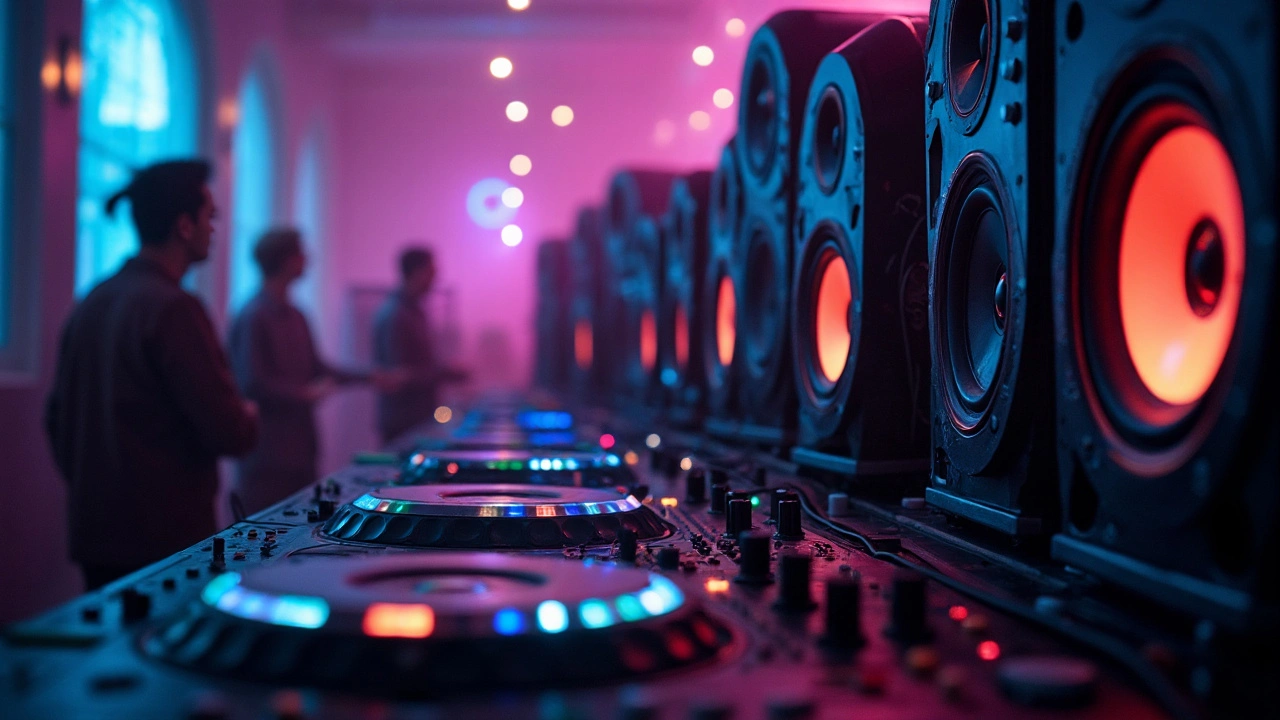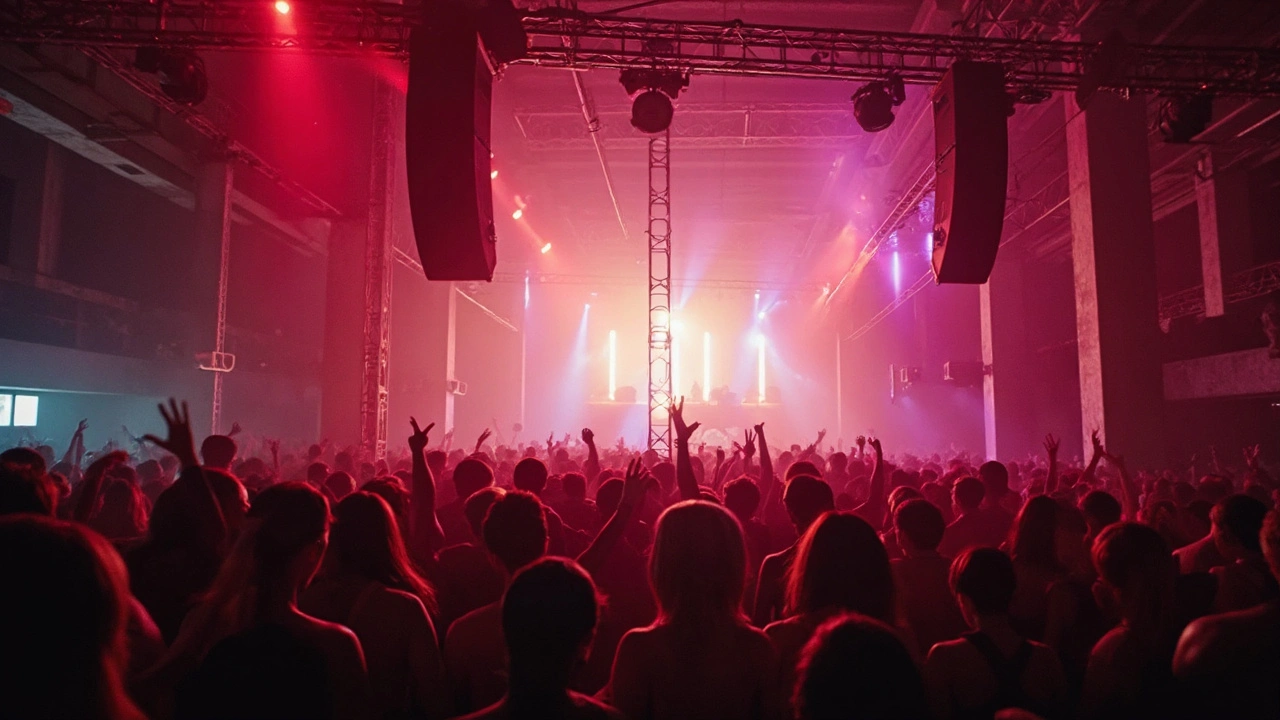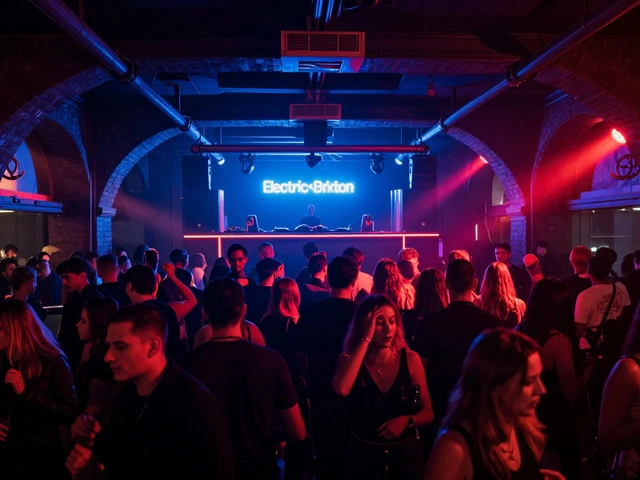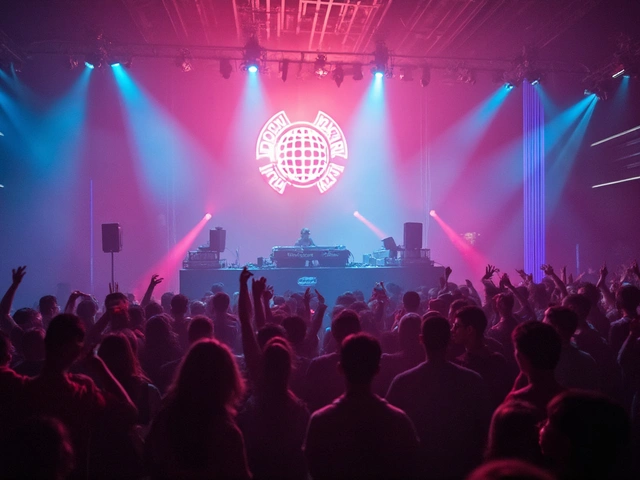Walk by Elephant & Castle at night and you’ll notice London’s Ministry of Sound nightclub lighting up the street with its buzzing crowds. For anyone living in London or popping over for the weekend, this place has become a must on the city’s after-dark map. Forget velvet ropes and overrated cocktails—here it’s all about the music, the atmosphere, and the sheer thrill of a world-class sound system.
If you’re wondering why clubbers from all parts of London and even Manchester make regular trips here, it’s simple: Ministry of Sound changed how London listens, dances, and parties. The club’s famous “Box” isn’t just a dancefloor, it’s an acoustic playground designed so you can feel every beat move through your chest—there’s nothing quite like it anywhere else in the city.
Locals know to keep an eye out for the night’s headliners. From techno legends to grime innovators, the line-ups rarely disappoint. The club also puts on special themed nights, secret guest appearances, and collaborations with London festivals like South West Four. If you’re tired of the same old Soho bars or crowded Shoreditch pubs, this is the upgrade you’re looking for.
- How Ministry of Sound Changed London’s Nightlife Scene
- A Club Experience Built for the Senses
- Tips for Your Night Out at Ministry of Sound
- Beyond the Dancefloor: Ministry’s Wider Influence
How Ministry of Sound Changed London’s Nightlife Scene
Back when Ministry of Sound opened in 1991, the club scene in London wasn’t the nightlife magnet it is now—especially in the South. The club kicked things off inside a converted bus garage near Elephant & Castle, a spot many Londoners wouldn’t have considered for a top night out. But news spread fast because Ministry put sound quality above everything. Instead of just blasting loud tunes, they brought in engineers who fine-tuned every part of the room's audio. Suddenly, people cared about how the music Ministry of Sound played actually felt, not just who was spinning the records.
It’s wild to think the first few parties didn’t even have an alcohol license—they ran well past sunrise, all about the dancing and the music. The club’s all-night energy caught on and became a London staple, quickly leading the way with marathon sessions and some of the earliest morning after-parties in the capital. These moves inspired plenty of other venues around town, from Fabric’s tunnel-rave vibes to Printworks’ industrial shows.
Global DJs like Carl Cox, Pete Tong, and Armin van Buuren saw Ministry as their London home—it wasn’t just a local spot, but a serious name on the world circuit. The club even kicked off its own record label, releasing chart-topping albums and singles throughout the late '90s and 2000s. Risks like these got London’s club culture noticed far beyond the M25.
Check out these numbers for a taste of how Ministry stacks up against other big UK clubs:
| Club | Opened | Capacity | International Awards |
|---|---|---|---|
| Ministry of Sound | 1991 | 1,600 | 10+ |
| Fabric | 1999 | 2,500 | 8 |
| Egg London | 2003 | 1,000 | 3 |
Thanks to Ministry’s lead, other clubs in London stepped up their game. Sound systems got better, crowd control got tighter, and the big nights went international. It’s also why you see line-ups on the Underground late at night—because Londoners trust the city still has a real club culture to come home to.
A Club Experience Built for the Senses
This isn’t your average night out in London. When you step into Ministry of Sound, you get hit with the full force of their custom-built sound system. It’s legendary for a reason: you’ll hear crisp highs and feel deep bass, thanks to the club’s specially designed “Box” room. The engineers worked with sound experts to angle the speakers just right, making sure every corner is covered. It’s so famous that top DJs, from Pete Tong to Carl Cox, often say it’s their favourite place to play in the UK.
Lighting is a game changer here too. You won’t find a dark, generic dancefloor. Instead, laser shows sync up with the music, throw pulses around the main floor, and turn even regular nights into visual spectacles. Don’t be surprised if you walk in and see a crowd gathered under their famous rotating disco ball or snapping pics next to art installations designed just for headline shows.
If you’re not in the mood for relentless club beats all night, Ministry has you sorted. The venue is split into different rooms—you can duck into the 103 Room for something lighter or pop into the Baby Box for up-and-coming talent. Rest areas and a dedicated courtyard cool-off spot mean you don’t have to spend all night squeezed in the crowd.
- Doors open late (usually around 10:30pm) and sometimes the party keeps going until 6am, especially for their all-nighter events.
- You can pre-book cloakroom spots and VIP tables online, which locals recommend for busy nights like New Year’s Eve or big DJ takeovers.
- Staff are clued up on London’s travel links, so if you need a late-night Uber or you’re heading back to Waterloo, just ask—they’ll point you in the right direction.
For anyone serious about Ministry of Sound, bring earplugs made for clubbing (you’ll still hear every detail) and wear layers—inside can get warm fast under those lights. It’s a full-on five-senses experience and it’s built for people who want more than just a night out—they want an all-round buzz.

Tips for Your Night Out at Ministry of Sound
If you want to make the most out of your visit to Ministry of Sound, start by planning your night well before you walk through the door. This is not your usual London bar—no stumbling across it last minute. Some nights, tickets sell out fast, especially when big headliners or special events are on. Book in advance through the official Ministry website or trusted sites like Resident Advisor to avoid disappointment.
- Dress code: While it’s less strict than some West End clubs, Ministry asks for neat casual—leave the tracksuits and slides at home.
- ID is a must: Even if you’re pushing forty, bring photo ID. UK club rules are strict and security won’t budge.
- Peak times: The crowd really packs in after midnight, so arrive by 11pm if you want a relaxed start, cloakroom access, and shorter queues for drinks.
- Getting there and back: The nearest Tube, Elephant & Castle, is on both the Northern and Bakerloo lines. Night Tube runs on weekends, but if you’re out past 4am, plenty of black cabs and Ubers circle the area. Walking alone isn’t recommended in the small hours—grab a mate or use cab apps.
- Cash or card? Ministry is cashless at all bars and cloakroom spots, so bring a card or phone for contactless payments.
- Drinks and water: Expect central London prices. Free tap water is available at all bars—hydration is key when you’re on the dancefloor for hours.
- Earplugs: The sound system here is famous for being both crisp and thunderous. Grab free earplugs at the bar, or bring your own if you’re sensitive to loud music.
- Chill zones: Main dancefloor got you hot? Upstairs and outside areas give you space to chat and cool off, but keep an eye on your valuables.
Want to know how Ministry lines up with the rest of London’s clubbing scene? Here’s a quick cheat sheet on practical stuff:
| Club | Nearest Tube | Cashless? | Capacity | Usual Last Entry |
|---|---|---|---|---|
| Ministry of Sound | Elephant & Castle | Yes | 1,555 | 03:00 |
| Fabric | Farringdon | Yes | 2,500 | 03:30 |
| Printworks* | Canada Water | Yes | 6,000 | 01:00 |
*Printworks closed in 2023 but is expected to reopen after redevelopment.
Pro tip: If you’re after a certain music genre—whether it’s drum & bass, techno, or UK garage—check line-ups religiously. Ministry’s calendar is packed, but the style of each night can be totally different. Sign up for the club’s mailing list for heads-up on ticket drops and secret gigs. Lock in your night early, get your mates together, and you’re set for a proper London clubbing experience.
Beyond the Dancefloor: Ministry’s Wider Influence
Ministry of Sound isn’t just a club—it’s a culture machine that shaped music and nightlife in London and beyond. Back in the early ‘90s, it launched its own record label, kicking off careers for acts like Example and London Grammar. The Ministry of Sound brand now pops up everywhere, from headphone ranges at John Lewis to those bold fitness classes you see in Elephant Park. If you’ve ever tuned into a dance music compilation on Spotify, chances are the Ministry had a hand in it.
Their influence spills into festivals too. Londoners who’ve braved rainy fields at Creamfields or Wireless know that Ministry often curates stages or throws official afterparties. They also dish out their sound system expertise to venues worldwide; you’ll spot Ministry’s setup tech in spots as far away as Singapore and Australia.
Here’s a quick look at Ministry’s impact by the numbers:
| Influence Area | Fun Fact |
|---|---|
| Music Label | Over 70 UK No.1 albums and singles |
| Event Reach | Weekly crowds surpass 5,000 in London |
| Merchandise | Headphones and speakers sold across major UK retailers |
| Charity | Community projects across Southwark and beyond |
If you fancy learning behind-the-scenes stuff, the club sometimes hosts music industry workshops—think DJ skills, production, and the nitty-gritty of event management. Locals even use the space for daytime creative meetups, mixing in panel talks about London’s shifting club culture. Basically, Ministry is about more than late-night fun; it’s where innovation in music and London nightlife keeps rolling, hour after hour.







